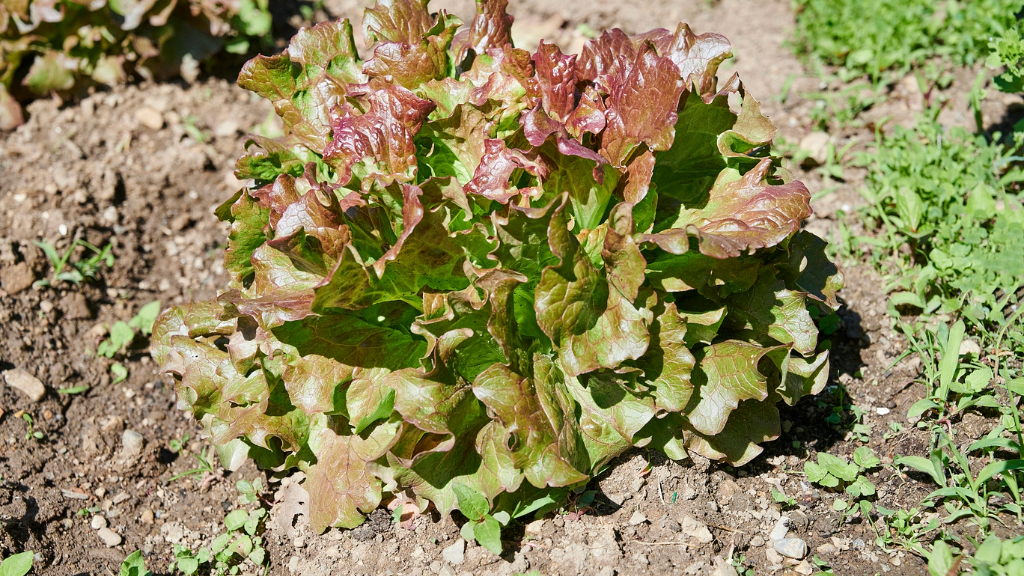History Of Bronze Arrowhead Lettuce Plant


(Author of The Bulb-o-licious Garden) Growing heirloom plants is not only a great way to preserve a little history but ensures your bounty will be identical to the parent plant from which the seed came. So, in essence, you will enjoy the same goodness that your grandparents and their parents did. What better way to feel closer to family than this, huh. Whether you're growing the same beautiful flowers or the same types of garden veggies, heirlooms are always the best way to go - at least in my opinion. So in keeping with this train of thought, I have an heirloom lettuce that just might peak your interest. Its name is Bronze Arrowhead.
History of Bronze Arrowhead
Don't be put off by the name. This heirloom is every bit as good as it was back in the day. So where's it come from? Let's begin with a little history lesson - and I'll try not to bore you.
Lettuce (Lactuca sativa) is said to have derived from the wild lettuce, Lactuca serriola, long, long ago. There are many types of lettuce, though most of us are most familiar with head and leaf lettuce. Skipping all the finer parts of their histories, we come to the loose-leaf lettuces - aka: cutting lettuce. Cutting lettuce is great for use in salads and commonly referred to by Italians as 'lattuga a cespo da taglio' or otherwise known as cut and cut again. This type of lettuce was introduced into England around 1827, coming here to the States about 1829. At the time, the best-known cutting variety was Spanish lettuce, which is nowadays referred to as oak leaf lettuce.
Have I lost you yet? Bear with me, I'm getting there. And so on and so forth came along an attractive cutting leaf lettuce similar to oak leaf lettuce. The light green leaves are oak shaped, though long and narrowed, with a warm, ruddy bronze (reddish-brown) sheen along the edges. This variety was first introduced by Germania Seed and Plant Company under the name of Bronze Beauty, later becoming Bronze Arrowhead. Known as "the finest, most colorful and delicious variety" one could grow, the plant was awarded the bronze medal (how appropriate) in the "All American Selections" in 1947.
And there you have it. A long-standing heirloom leaf lettuce that has it all"¦looks, great taste, and it's slow to bolt too! Whoo-hoo!
Growing Bronze Beauty Lettuce
Growing this loose-leaf lettuce is easy as well. You can either start the seeds indoors or direct seed them out in the garden. Like any lettuce, it enjoys cool weather, so if it's gonna be warm, provide some shade (mulch helps with that too). And if you're in a short-season climate, cold frames can extend their growing time. Give the plants fertile, composted soil and ensure it drains well. Then provide adequate nutrition and moisture throughout the growing season. Since Bronze Arrowhead is a cut and come again lettuce, the more you take the more it gives you.
Give it about 50-60 days after planting and let the harvesting commence! Pick leaves every 10 days or so, leaving the central rosette of leaves. Likewise, if you so desire, you can take out the entire head and resow successive plantings every 2-3 weeks.
Gardening tips, videos, info and more delivered right to your inbox!
Sign up for the Gardening Know How newsletter today and receive a free copy of our e-book "How to Grow Delicious Tomatoes".

Nikki Tilley has been gardening for nearly three decades. The former Senior Editor and Archivist of Gardening Know How, Nikki has also authored six gardening books.
-
 How To Make A Bouquet Garni Or Herb Bundle For Cooking
How To Make A Bouquet Garni Or Herb Bundle For CookingIf you’re a great cook, you may have made an herb bundle before. If this is a new idea, learn how to add sparkle and interest to your dish with a bouquet garni.
By Amy Grant
-
 ‘Coral Charm’ Peony Care For Sublime Semi-Double Peonies With Lush Salmon Pink Flowers
‘Coral Charm’ Peony Care For Sublime Semi-Double Peonies With Lush Salmon Pink FlowersPeonies are known for their soft baby pink or magenta tones, but if plushy coral blooms are your thing, here’s our guide to the ultimate ‘Coral Charm’ peony care
By Tonya Barnett